Human sexuality is as old as humanity itself. It connects people, influences behaviours, and drives biological reproduction.
It is also a social construct, guided by the collective social norms of a particular time and place, so the way that people have experienced and expressed themselves sexually has adapted and evolved throughout human history.
The psychology behind human sexual behaviour is a growing area of research that has many strands. Psychologists continue to explore the psychological influences on sexual behaviour and sexual activity, their psychological impacts, and how modern ideas about sex and sexuality compare to previous points in history.
Sexual behaviour through history
Human sexual activity is any activity that creates sexual arousal. It can be a solitary activity or it can happen with other people. And it is ubiquitous, but frequently thought to be taboo – throughout different societies, cultures, and historical ages – which means that modern scientific research into the topic remains relatively sparse when compared to other naturally occurring phenomena.
However, sex-related artefacts are found around the world, and paint a picture of how past societies viewed sex and sexual activities.
- The Kama Sutra of India, written around the third century C.E. by the Sanskrit scholar Vatsyayana and translated into English in 1883, is thought to be one of the first pieces of literature about sexual intercourse and sexual activity. It is not, however, just about sex. Vatsyayana’s treatise uses prose, poetry and art to offer guidance in relationships, marriage, and emotional wellbeing. In fact, India is home to a number of important historical artefacts concerning sex and attitudes towards sex. The Vedas, for instance, are the oldest texts in Hinduism and state that sex is about dharma (duty), kama (pleasure) and moksha (liberation). Additionally, India also boasts the world’s earliest references to kissing, dating back to 1500 B.C.
- Several pieces of literature from ancient China, including the Zhuang Zi, Fusheng liuji, Jin Ping Mei, and Honglou meng, depict both heterosexuality and homosexuality, while the philosophical Taoist sexual practices texts speak of sexual activity as a path to good health and spiritual development.
- Depictions of sexuality are abundant in ancient Greek art, with sculptures, temples, and other art forms crafted to celebrate fertility, sexuality, and desire.
Through literature, journals, philosophy, art, and other artefacts, researchers have been able to surmise a great deal of information about sexuality and the sexual attitudes of the past. Attitudes towards topics like gender and different sexual orientations can be deduced through this type of research.
Modern ideas about sexuality
Psychological and biological research into sexual behaviour becomes relatively more accessible when looking at more recent societies and cultures. For example, Sigmund Freud wrote extensively about the psychology of sexual behaviours in the early 20th century, and Alfred Kinsey, an American sexologist, co-wrote works including Sexual Behaviour in the Human Male and Sexual Behaviour in the Human Female after founding the Institute for Sex Research – now called the Kinsey Institute – in 1947.
In 1966, William Masters and Virginia Johnson published Human Sexual Response, which outlined the four-stage human sexual response cycle. And in 1971, the Archives of Sexual Behavior, a peer-reviewed academic journal in sexology, was launched. It publishes articles that include empirical and methodological research in biological and social psychology, among other sciences, as well as essays, case reports, and book reviews.
There is also a growing collection of research on the determinants of sexuality and sexual health, including social norms, gender identity, and access to health care, as well as the psychological reasons behind attraction, flirting, and dating.
The collective evidence confirms that attitudes towards different sexual behaviours, attitudes, and actions still vary greatly around the world.
- Sexual orientation. Non-heterosexual activity is illegal in some countries, and can even be punishable by death, while in other countries, attitudes skew more positively, embracing ideas such as gay marriage and adoption by gay parents.
- Taboos. What’s considered taboo is defined on a person-by-person basis, but is also influenced by what’s deemed palatable – or unpalatable – according to social customs. For some people and communities, masturbation and sexual fantasies, or having multiple sexual partners is considered to be unacceptable behaviour. Others, meanwhile, are more accepting and explorative when it comes to taboo (and consensual) sexual activities like BDSM (bondage and discipline, dominance and submission, sadism and masochism).
- Consent. Conversations about consent and permissions before and during sexual acts have become more mainstream in recent decades. For example, consent campaigns for university and college students are targeting the prevalence of sexual assaults on campuses. However, societal definitions and legal processes have yet to catch up. In its Attitudes to Sexual Consent report, YouGov’s End Violence Against Women Coalition states that it’s clear that “people have different understandings of what constitutes rape and sexual violence…” and that despite the increase in women reporting rape to the police, the rates of people charged with – and convicted of – rape are actually falling.
- Education. Opinions vary greatly about when and how young people should learn about sex. Some believe adolescents should learn about sex in secondary school or high school – or sooner – while others believe they shouldn’t learn about it at school at any stage. The potential topics discussed also generate differing views, with some believing the focus should remain on puberty and reproduction, and others believing that teenagers should explore ideas around sexual health, sexual desire, and sexual dysfunction.
Public health considerations
Modern science and research has also enabled a greater understanding of sex from a health care perspective, and has even helped facilitate developments in human sexuality.
- Contraception. The invention of the birth control pill triggered a sexual revolution for women, allowing for a separation of sex and procreation, and empowering women to advocate for equality in sexual pleasure, sexual satisifaction, and sexual experiences.
- Sexually transmitted infections (STIs). A greater understanding of how STIs are spread, how they can be prevented, and how they can effectively be treated, have been hugely important for sexual health. Advancements in the science behind everything from genital herpes to HIV/AIDs have helped reduce stigmas and even saved lives.
- Sex, gender, and sexuality. There have been significant advancements in the understanding of sex, gender, and sexual orientation during the past century. For example, it wasn’t until 1973 that the American Psychological Association (APA) removed homosexuality from its Diagnostic and Statistical Manual of Mental Disorders (DSM). Prior to this, it was considered a mental health concern that required treatment with psychiatry or even aversion therapy.
Advance your education in sexual behaviour
Develop a critical understanding of the origins of human sexual behaviour and the role evolution plays in sexual attraction with the 100% online MSc Psychology at the University of Sunderland. This flexible master’s degree features a module on sexual behaviour, allowing you to explore sexual behaviour from a psychological and biological perspective.
You’ll complete your learning entirely online and part-time, so you can study from anywhere in the world around your current professional and personal commitments.






